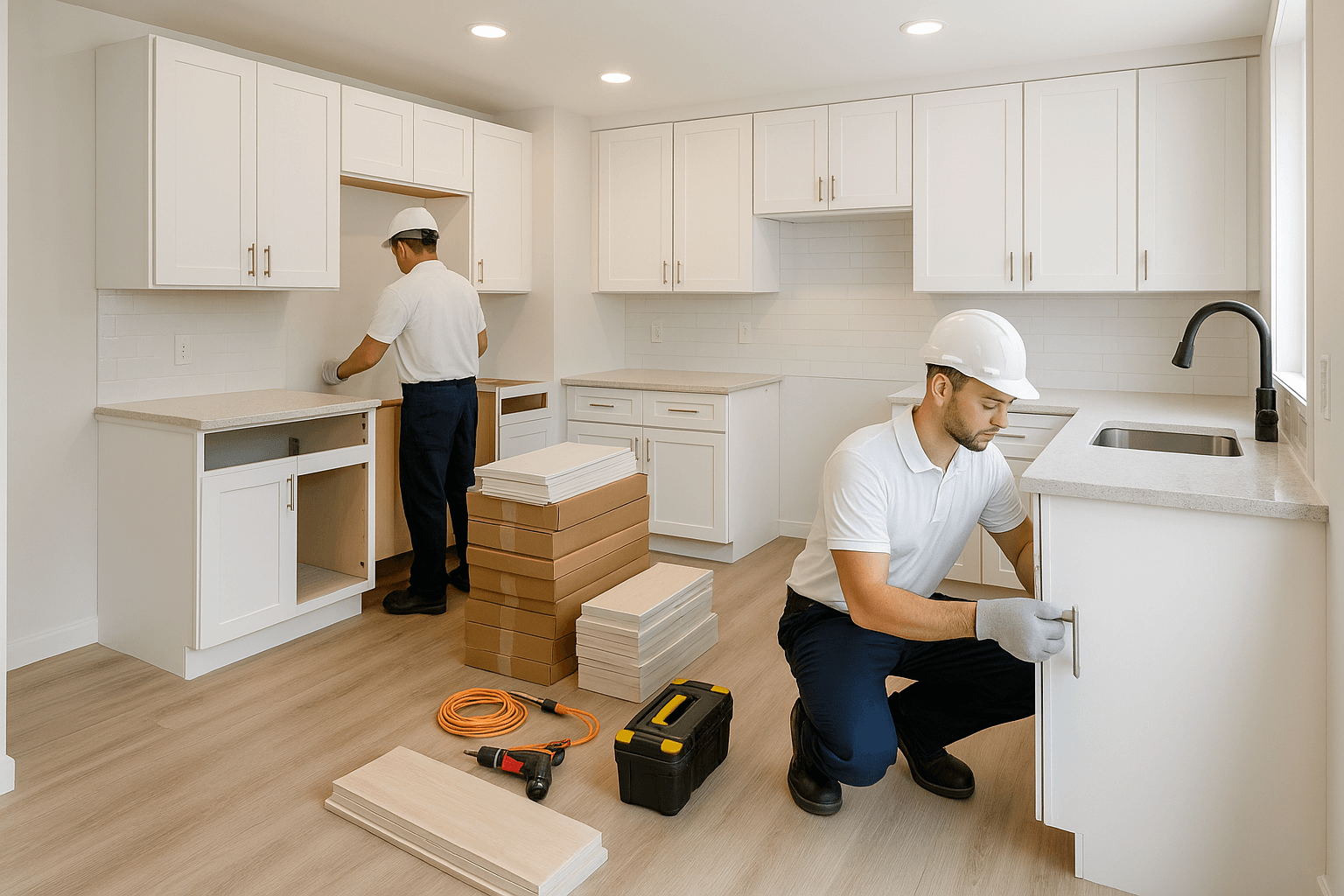How to Renovate Without Losing a Single Day of Rent
Upgrade your rental units between leases with zero vacancy downtime using our proven prep-and-execute strategy. No rent lost, just results.

Every day a unit sits empty equals lost income for property owners and managers. Traditional renovation methods often leave units vacant for weeks, waiting for coordination, materials, and crews. But it doesn’t have to be that way. At DOCI, we flipped the script, preparing while tenants are still in place, to ensure renovation starts the same day a unit is empty. Here’s how to renovate with zero vacancy loss:
Why Traditional Turnovers Matter—and Why They Cost You
For years, the standard process went like this:
- Tenant moves out.
- You wait for keys.
- You plan the scope.
- You order materials.
- You book crews.
- Weeks go by.
- Renovation starts late.
Every delay cuts into your return. Extra vacancy equals lost rent and added pressure to complete quickly. And rushed jobs mean costly mistakes, unhappy tenants, and damage to your reputation.
Our goal: eliminate those wasted days. Let’s fix the process.
Step 1: Flip the Script, Prep Well Before Move-Out
To revolutionize your turnover process, shift your planning earlier.
- Scope out the renovations ahead of time: In the weeks before a tenant’s lease ends, inspect the unit. Decide which upgrades are required.
- Order materials early: Once the scope is set, place orders immediately. Precise specs, cabinet colors, tile types, fixtures, need to be locked in so orders arrive on time.
- Book crew time now: Reserve your renovation team in advance. Align crew schedules with the upcoming vacancy moment.
By the time the tenant moves out, you're ready to roll, no hold-ups, no waiting.
Step 2: Dive In on Day One, Demo Starts Immediately
At DOCI, day 1 after move-out looks like this:
- Keys in hand = Demo begins.
- Demo team shows up, pulls out old items, and begins surface prep.
- Prime areas are ready for electrical, plumbing, and structural updates as soon as fixtures are removed.
Starting on day one keeps momentum going. It avoids gaps and ensures every trade can start on schedule, reducing wasted time and keeping the project moving fast.
Step 3: 7‑Day Turnover Plan, A Detailed Execution Blueprint
Our streamlined timeline:
Phase
Day Range
Demo
Days 1–2
Structural & Rough
Days 2–3
Finishes & Painting
Days 3–5
Fixtures & Flooring
Days 4–6
Punch List & Clean
Day 7
- Parallel workflows assign labor to different trades at the same time (electricians don’t wait for flooring).
- Milestone checks ensure each stage is completed on time.
- Daily communication keeps property managers updated, including any adjustments needed.
This approach focuses on efficiency, not rushing, so quality never suffers.
Step 4: Crew Excellence, Speed Without Sacrifice
A tight schedule demands a crew built for it. That’s why we train teams specifically for rental turnovers:
- Specialized teams handle kitchens, bathrooms, painting, flooring, all with experience and speed.
- Coordinated work eliminates overlap and wasted time.
- Intentional planning ensures every task feeds into the next.
A synchronized, well-trained crew gets the job done rapidly, but thoroughly.
Step 5: Systematize for Repeat Success
Renovations should be predictable, no surprises.
- Standard Operating Procedures (SOPs): Define scope, materials, and process from the start so nothing is missed.
- Checklist-driven workflow: Ensure every task is accounted for and completed before launch.
- Progress tracking: Daily updates keep the whole team accountable and on schedule.
By systemizing the process, every renovation follows the same proven timeline, so results are consistent.
Step 6: Results You Can Count On
Zero vacancy means:
- Full rental income keeps flowing.
- Straightforward leasing photos and tours are ready on time.
- Happy tenants and property managers appreciate speed and quality.
All achieved without rushing, but with a strategic, engineered system.
A Real-World Win
At one high-volume rental property, our traditional method left units vacant for over two weeks, wasting more than $1,400 per unit in rent. After switching to prep-first planning, we delivered full turnovers in 7 days or less, zero vacancy. That saved thousands monthly in rent and boosted leasing momentum.
Why It Works
- Zero day gaps: Planning eliminates delays.
- Team efficiency: Crews know the jobs, the timeline, and the stakes.
- Transparent communication: Property managers are never left wondering.
- Consistent execution: SOPs ensure every unit delivers the same high standard.
This model sets a new standard for rental renovations, fast, clean, and worry-free.
Conclusion: Focused Action Redefines Vacancy
Renovations don’t need to interrupt cash flow. With precise planning, early ordering, coordinated crews, and systemized processes, you can renovate cleanly in just 7 days, while maintaining full occupancy.
This is how DOCI transforms rental renovations: no downtime. No risk. All returns.
👉 Want to renovate with zero vacancy? Let’s talk.
SEO‑Relevant FAQs
Q1: Can renovating between leases really avoid all vacancy?
A1: Yes. By finalizing the scope, ordering materials, and booking crews before move-out, we start renovation on "Day 1" post-move—and finish in 7 days or less to eliminate vacancy days.
Q2: How soon should I finalize renovation plans?
A2: Inspect and detail your scope a few weeks before lease end. That gives enough time to order materials and schedule crews, ensuring you're ready to start right when the tenant moves out.
Q3: What if deliveries or inspections get delayed?
A3: We build buffer days into schedules and maintain backup options. With transparent communication, any hiccups are resolved before they impact your rental income.
Q4: Is a 7-day renovation realistic for all unit types?
A4: For most one-to-three-bedroom units with pre-planned scopes, yes. Larger or more complex renovations may require adjustments, though the same process applies—just longer timelines.
Q5: How does this process benefit tenants and property managers?
A5: Units are ready on time with high-quality finishes. Tenants move into clean, modern spaces and property managers avoid vacancy and leasing delays.
Let us create a space that exceeds your expectations

